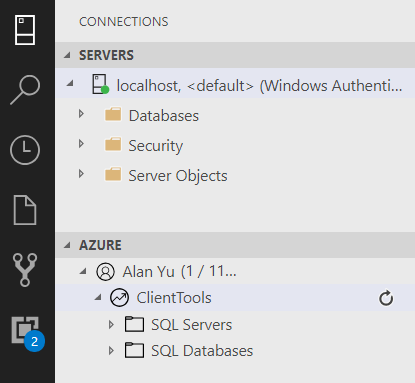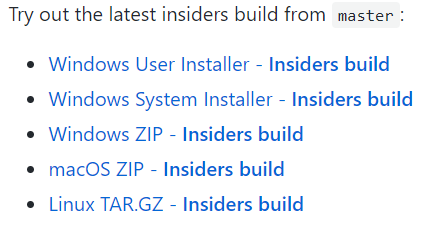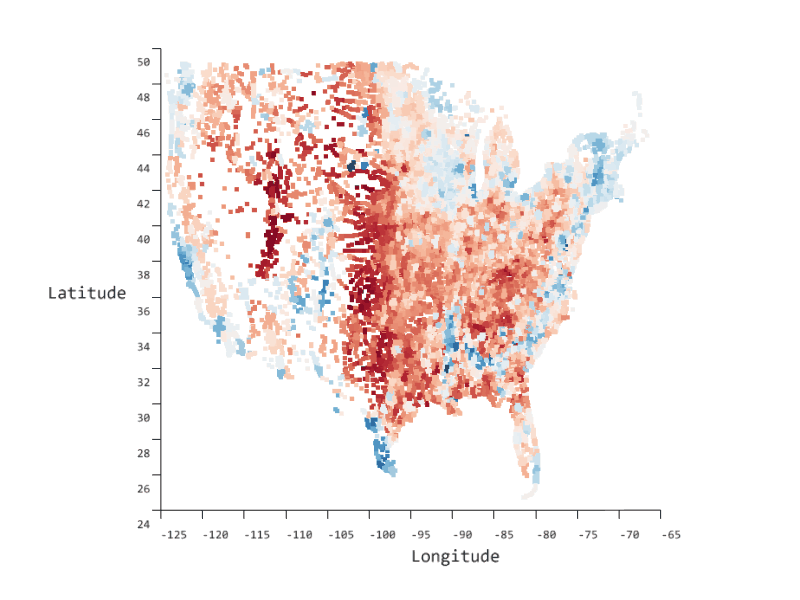The April release of Azure Data Studio is now available
We are excited to announce the April release of Azure Data Studio (formerly known as SQL Operations Studio) is now available.
Download Azure Data Studio and review the Release notes to get started.
Please note: After downloading Azure Data Studio, say Yes to enabling preview features so that you can use extensions.
Azure Data Studio is a multi-database, cross-platform desktop environment for data professionals using the family of on-premises and cloud data platforms on Windows, MacOS, and Linux. To learn more, please visit our GitHub.
Check out this video for a general overview of Azure Data Studio.
The key highlights to cover this month include:
- March release recap
- Azure Explorer improvements
- Visual Studio code merge process
- Insiders build process
- Viewlet revamp
- Notebook improvements
- Announcing SandDance extension
- Bug fixes
For a complete list of updates, please refer to the Release notes.
March release recap
Last month, we released many highly-requested features by the community including SQL Notebooks, PostgreSQL support, and the PowerShell extension for Azure Data Studio. To learn more about these features, check out the full blog post.
With the excitement for PostgreSQL support, this makes Azure Data Studio officially a multi-database tool. As a result, we’re curious to hear what other databases the community is looking for. Currently, we have the following tracking requests. If one of these databases listed interests you, please leave a thumbs up on the issue.
If there are other databases you would like to see that are not on this list, please open an issue following the format of these issues.
Meanwhile, SQL Notebooks continues to be used in demos, conferences, videos, and blogs all over the world. You can keep track of all of the exciting ways the community is using Notebooks in Azure Data Studio across SQL Server, Azure SQL, and PostgreSQL by following us on Twitter. If you have ideas of how to showcase Notebooks, please don’t hesitate to tweet us.
We have also made it even easier to use the PowerShell extension for Azure Data Studio with new updated documentation. Give it a try and let us know your ideas to make even better use of the PowerShell extension for your database management needs.
Azure Explorer improvements
If you used the Azure Resource Explorer, you may be wondering where the Azure icon went. In this release, we wanted to make it even easier for you to manage your Azure resources by having an integrated object viewer experience with our Servers View. Thus, we made a few changes:
- Servers view has been renamed to Connections
- Azure view now allows users to browse objects in Azure SQL Databases directly without having to copy to Servers view
- Servers view has the exact same functionality as the previous Servers experience
- Lists saved connections for SQL Server, Azure SQL, and PostgreSQL connections
- Server groups to help organize connections
- Right-click actions
- Azure view has the exact same functionality as Azure Resource Explorer
- Sign in to Azure account
- View Azure subscriptions and resources
- Filter subscriptions

The Connections viewlet is fully extensible providing the opportunity to bring in future extensions such as Central Management Servers. Check out the latest insiders build for an early preview of the CMS experience.
Visual Studio Code merge process
As requested by the community, we’ve decided to get the newest Visual Studio Code features even faster. Previously, we would be 2-3 months behind before doing a VS Code merge. We’ve recently made engineering changes so that we can stay more closely in sync with VS Code.
As a result, the April release is built against the latest stable VS Code (1.33), which is their March release, and upgraded from 1.30.2. This includes features from:
Users should expect to see VS Code features light up much more quickly in Azure Data Studio going forward.
Insiders build process
As part of moving faster to align with VS Code releases, some new features will be shipped in an Insiders build which is a preview build that doesn’t have the same quality as our monthly stable builds. In production environments, you should keep using the monthly stable builds, but if you want to get the latest features, you can try out our Insiders build.
Insiders builds allow us to get feedback on new experiences like Central Management Servers, new welcome pages, schema compare, and more. We also update the Insiders build daily and keep the same download link for convenience.
To try out an Insiders build, go to our GitHub, and search below our stable releases to find the following:

Choose the installation method depending on your operating system, and then you are good to go. Keep in mind that Insiders builds will tend to have more bugs, so feel free to report any that you see.
If you prefer to stay on our monthly stable builds, then that is not a problem. Read on to learn more about changes in this release.
Notebook improvements
Notebooks in Azure Data Studio continues to grow in popularity with the release of SQL Notebooks for both SQL Server and PostgreSQL. Thus, we are committed to improving the Notebook experience for not only the SQL kernel, but for other kernels like Python. Here is a summary of Notebook changes this month:
- Added a button on the toolbar to clear output for all cells
- Added a button on the toolbar to run all cells
- Fixed connection name instead of server name (if set) in the Attach to drop down
- Fix for images in markdown not rendering when you’re using relative image paths
- Improved functionality in notebook grids by adding double-click auto-resize column size and improved mouse wheel support
- Improvements to error handling and Python install resiliency when installing Python through notebooks
- Improvements to select all functionality when selecting notebook cells
- Improvements to notebook connections to prevent closing a notebook and impacting an object explorer connection
- Improved notebook experience to display a message to the user when the notebook disconnected and needs a connection to run cells
- Improved support for unsaved notebooks to rehydrate in ADS when ADS is started again
As you use Notebooks in your day-to-day work or in demos, you will inevitably get ideas for feature requests. You can open issues on our GitHub directly and we will consider implementing these ideas.
Announcing SandDance extension
Azure Data Studio now offers quick visualizations for the files you are working on whether its local files or files you are working on HDFS in your SQL Server 2019 Big Data Cluster. SandDance, the well-loved data visualization tool from Microsoft Research, has been re-released as a Preview extension in Azure Data Studio and as an open source project on GitHub. In addition, SandDance is also available as a Preview extension to Visual Studio Code.
You can use SandDance to explore and tell stories with your data, easily discover patterns and insights by visualizing datasets across different attributes using natural user interactions. By using easy-to-understand views, SandDance helps you find insights about your data, which in turn helps you tell stories supported by data, build cases based on evidence, test hypotheses, dig deeper into surface explanations, support decisions for purchases, or relate data into a wider, real world context.
This is especially helpful when you are trying to have a quick look at the data and understand what’s going on.

SandDance was created by Microsoft Research’s Visualization and Interactive Data Analysis (VIDA) group.
Visit the new SandDance GitHub project or try it out now with the companion website.
Bug fixes
If you would like to help make Azure Data Studio a great product, please share any feedback or report issues through our Issues page. Our engineering team is regularly going through the untriaged issues and assigning issues into different monthly milestones so that you will know what we are working on it. Your votes help us prioritize issues.
Check out the full list of bug fixes for the April release.
Contact us
If you have any feature requests or issues, please submit to our GitHub issues page. For any questions, feel free to comment below or tweet us.

